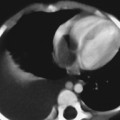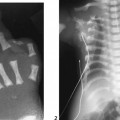CASE 68 A 1-month-old infant presents with tachypnea associated with decreased oxygen saturation. Figure 68A Figure 68B Figure 68C An AP chest radiograph demonstrates cardiac enlargement (Fig. 68A). A longitudinal ultrasonogram shows a smaller caliber of the aorta below the celiac level (Fig. 68B). On transverse view, the liver is occupied by multiple round hypoechoic areas (Fig. 68C). Figure 68D Differential diagnosis: hemangioma with a focal right lobe mass with central calcification. Figure 68E Differential diagnosis: The CT image shows a typical enhancement pattern of hemangioma at early scanning. Infantile hemangioendothelioma of the liver A rare entity, hemangioendothelioma is the most common benign hepatic tumor and is seen primarily in young infants (95% of cases <1 year of age). This vascular lesion acts as an arteriovenous fistula. It is twice as common in girls. Fifty percent of patients have associated skin hemangiomas. Most affected infants present with congestive heart failure due to high cardiac output during the first 6 months of life. Asymptomatic hepatomegaly, jaundice, anemia, and hemoperitoneum (due to rupture) occur less commonly. A loud systolic bruit may be heard over the liver. Severe arteriovenous shunting may induce fetal hydrops. Serum a-fetoprotein level is typically mildly elevated. Spontaneous involution is observed in small lesions.
Clinical Presentation
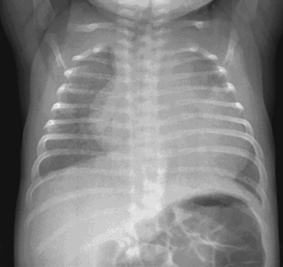

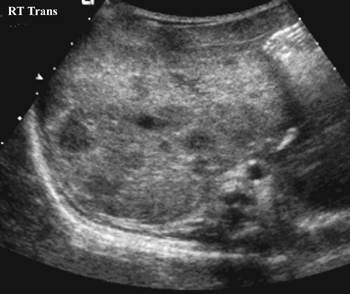
Radiologic Findings

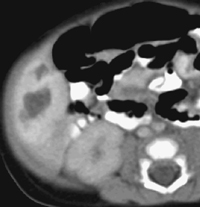
Diagnosis
Differential Diagnosis
Discussion
Background
Clinical Findings
Stay updated, free articles. Join our Telegram channel

Full access? Get Clinical Tree






